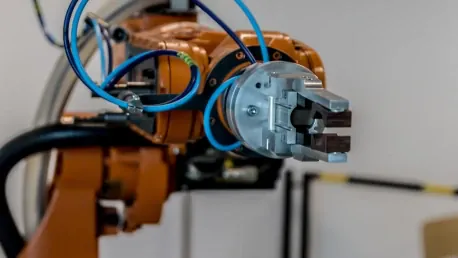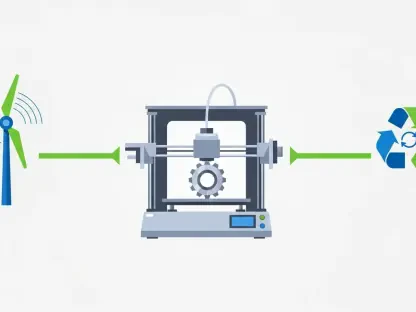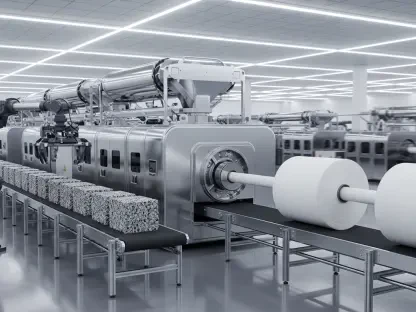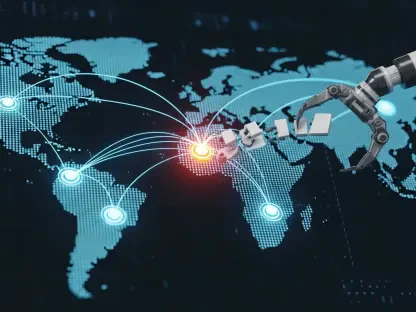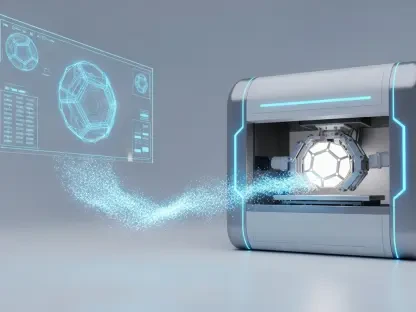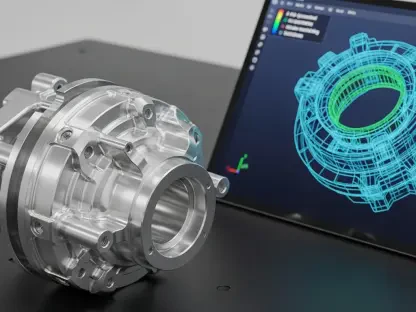Listen to the Article
Machining large and complex parts can be challenging and time-consuming, especially when dealing with heavy pieces that weigh several tons. However, new technologies have enhanced company productivity and reduced employee workloads.
Liebherr-Verzahntechnik GmbH developed the PHS Pro pallet handling system, revolutionizing GROB-WERKE GmbH & Co. KG, specializing in automation and prominent part manufacture. This smart system has increased GROB’s production output by 45% and solved various engineering issues associated with maneuvering huge parts, space organization, and increased automation.
This article describes how GROB-WERKE solved production challenges with automation. It highlights how the PHS 10000 Pro system and its role has transformed the company’s manufacturing flow chart. It has enhanced yield by 1.45 times and offered solutions to several engineering issues, such as dealing with large components, controlling space, and industrializing the manufacturing process to a great extent.
How GROB-WERKE Solved Production Challenges with Automation
GROB-WERKE GmbH & Co. KG is a family-owned company located in Mindelheim, Germany. Founded in 1926, the company is known for its work in mechanization, especially in the automotive and industrial fields. GROB-WERKE currently employs about 8,000 people and wants to remain competitive in the international market despite having high labor costs.
As earlier pointed out, GROB relies so much on automated production for large portions, thus minimizing human intervention. This strategy assists the company in dealing with demographic shifts in the employees and increased operation costs.
Reducing Downtime and Labor Costs with an Automated Loading System
GROB aimed to improve its manufacturing process for large machine parts like spindle housings, table brackets, and machining carriages. These parts are castings weighing up to six tons each, and the fixtures used to support them can weigh up to eight tons.
Previously, workers manually loaded large components into machining centers using a pallet changer with a zero point clamping system and a hydraulic crane. This slow process reduced production efficiency, since the machines could not be used often. Setting up the machines was also tricky and required a lot of manpower.
GROB chose to automate the loading and unloading processes for its 4-axis machining centers, which shape large castings, to address these issues. The goal was to create a framework that needed less human assistance, increased machine availability, and reduced labor costs.
Fitting the PHS 10000 Pro into Limited Space
The Liebherr-Verzahntechnik GmbH PHS 10000 Pro pallet handling system is designed for storing and moving large parts. Its robust gantry design accommodates 16 workpieces and can carry loads up to eight tonnes. GROB selected the PHS 10000 Pro for its compact design, which utilizes only 10 meters of floor space without requiring changes to its production layout.
The Procam computer program automates access to machining centers, and the portable setup station assists operators in monitoring processes. On the other hand, the implementation part presented unique engineering challenges:
Space Constraints: GROB had to find creative solutions because the system had limited space. The first challenge was fitting it to handle large pallets and heavy items. They took time to measure carefully how to place the machine so that it would work well without disrupting other activities in the building.
Retrofitting Existing Machines: Since 2009 and 2012, they have used two 4-axis machining centers, which needed updates to include the latest automation technology. They increased the number of tool magazines from 270 to 450, improving flexibility and rack capacity.
Integration with the Pallet Handling System: One of the most complex parts was fitting the PHS’s lift module, designed to lower only pallets. Due to space constraints at GROB, the lift module was redesigned to drop pallets closer to the machines and push them into the T-slot of a loading rail.
Logistical Challenges during Assembly: Moving the PHS trolley to the job site was challenging because it is a large trolley weighing 22 tonnes. Since they had to lift the trolley into the pit behind the shelf magazine, the crane boom they used could not clear the skylight by more than 2 cm. This limitation required them to install a truck crane to access the area under the roof, which complicated the installation process.
Increased Productivity by 45% with Automated Part Handling
The outcomes have been phenomenal enough to gain the stakeholders’ attention. After installing the automated shuttlecock padding design, the spindle’s operation time has been enhanced to 66% less, depending on the manual labor process. This has led to a 45% improvement in output.
This result comes from high spindle use. Because the plant automatically loads and unloads workpieces, the spindle runs up to 90% of the time when producing large parts, which is ideal, given the complexity of the machining needed. The automation reduces costs and lightens the workload for employees, allowing them to work fewer nights and weekends.
Additionally, the system can operate three shifts, six days a week, which maximizes the use of the machinery. Last but not least, GROB has not increased labor costs even with increases in the work rate. This positions the company well within the global manufacturing landscape.
Exploring the Top Automated Systems in Manufacturing
Implementing automation technology has helped increase efficiency in assembly lines, increase accuracy, and reduce cost. This global upsurge also includes utilizing more complex automated processes, including the highly evaluated PHS 10000 Pro system that GROB-WERKE utilizes. Keep reading to find out how other top automated strategies help manufacturing and where GROB is.
1. Industrial Robotics: Precision and Efficiency
Industrial robotic methods, including welding, painting, and assembly, are still widely used in production. At GROB, mechanization also covers loading and unloading large parts, which would otherwise be done manually and take time. Like industrial robots, the business has automatic solutions that log hours with the same efficacy as 24/7 productivity, minimizing downtime for setup and other processes while maximizing efforts.
2. How AGVs Improve Workflow and Reduce Manual Labor
Many automation courses now include automated guided vehicles (AGVs) that move goods in factories. The approach helps handle and store pallets for large, heavy parts. Like AGVs, the PHS method transports large parts needed in manufacturing, removing the need for workers to move these materials around the factory.
3. Optimizing Conveyor Systems for Continuous Workflow
Like conveyor belts that transport materials along the assembly line, the PHS 10000 Pro design also assists in simplifying GROB’s production line by transporting the workpieces onto and off the machine. A solution that increases the output of GROB’s 4-axis machines and improves how the spindles work. The conveyor systems move goods continuously without stopping, which helps to boost efficiency.
4. 3D Printing Reduces Waste and Increases Efficiency
GROB-WERKE currently does not use 3D printing to make large pieces, but this technology is slowly being adopted in the aerospace and automotive industries to create complex components. 3D printing helps create intricate elements while wasting less material. They are also using robots to manufacture big and heavy parts with high accuracy, aiming to reduce waste and costs in the future.
5. Automated Inspection Systems Ensure Quality with Speed
GROB has implemented automation similar to machine vision inspection procedures used in today’s assembly lines, identifying faulty parts. Using the new PHS technology, the plant can maintain high precision during production with minimal human involvement. This reduces human influence and ensures that large parts meet very high-quality standards.
The Future of Large Parts Assembly
Many jobs now require training in computerized operations that need little assistance. Such advancements help companies tackle labor challenges, lower costs, and improve capacities. As competition increases due to better technology, more plants will likely adopt robotization like the team from GROB did. The PHS 10000 Pro system is already proving to be essential for the future of large parts manufacturing.
